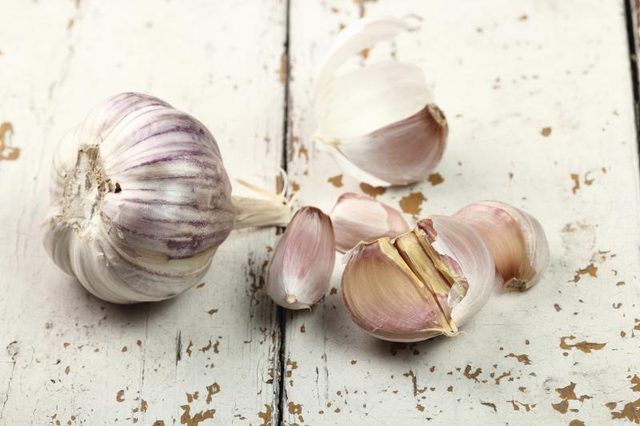Bulbs
Flower Basics
Flower Beds & Specialty Gardens
Flower Garden
Garden Furniture
Garden Gnomes
Garden Seeds
Garden Sheds
Garden Statues
Garden Tools & Supplies
Gardening Basics
Green & Organic
Groundcovers & Vines
Growing Annuals
Growing Basil
Growing Beans
Growing Berries
Growing Blueberries
Growing Cactus
Growing Corn
Growing Cotton
Growing Edibles
Growing Flowers
Growing Garlic
Growing Grapes
Growing Grass
Growing Herbs
Growing Jasmine
Growing Mint
Growing Mushrooms
Orchids
Growing Peanuts
Growing Perennials
Growing Plants
Growing Rosemary
Growing Roses
Growing Strawberries
Growing Sunflowers
Growing Thyme
Growing Tomatoes
Growing Tulips
Growing Vegetables
Herb Basics
Herb Garden
Indoor Growing
Landscaping Basics
Landscaping Patios
Landscaping Plants
Landscaping Shrubs
Landscaping Trees
Landscaping Walks & Pathways
Lawn Basics
Lawn Maintenance
Lawn Mowers
Lawn Ornaments
Lawn Planting
Lawn Tools
Outdoor Growing
Overall Landscape Planning
Pests, Weeds & Problems
Plant Basics
Rock Garden
Rose Garden
Shrubs
Soil
Specialty Gardens
Trees
Vegetable Garden
Yard Maintenance
How to Plant Garlic in Washington State
How to Plant Garlic in Washington State. How you plant and grow garlic in Washington state depends on whether you live east of west of the Cascade Mountains. The western part of the state has a climate with mild winters and cloudy, rainy weather from autumn until spring. Eastern Washington has a dry climate with cold winters and warm to hot...

How you plant and grow garlic in Washington state depends on whether you live east of west of the Cascade Mountains. The western part of the state has a climate with mild winters and cloudy, rainy weather from autumn until spring. Eastern Washington has a dry climate with cold winters and warm to hot summers. Washington has a good climate for growing garlic and is fourth largest garlic-producing state in the United States.
Varieties for Washington
Most garlic types grown commercially in Washington are softneck varieties, also called silverskin garlic. You can grow these at home as well. White softneck bulbs are sometimes tinged with purple. Some softneck cultivars grow numerous, small cloves, while others yield fewer, slightly larger cloves. You can braid the soft stalks of softneck garlics for storage. Grocery stores most often sell softneck garlic.
Garlic will grow in U.S. Department of Agriculture plant hardiness zones 3 through 8.
Softneck varieties suitable for Washington include California Early (Allium sativum "California Early") and "California Late" (Allium sativum "California Late").
Home gardeners may prefer hardneck garlics that yield fewer, but larger cloves. They are prized for their flavor and are easy to peel, but donít store well. Hardneck garlic cultivars grow coiled flower stalks called scapes by mid- to late spring. These straighten out as the plant matures.
Horticulturalists at Washington State University recommend three hardneck cultivars, "Music" (Allium Sativum var Orphioscorodon "Music"), Asian Tempest (Allium sativum "Asian Tempest") or Chetís Italian Red (Allium sativum var. Sativum "Chetís Italian Red").
Elephant Garlic (Allium ampeloprasum), a variety wild leek, not a true garlic, grows bulbs with three to five large, mild cloves with a garlic-like flavor and aroma. It will grow in USDA zones 5 through 9. (See Reference 4)
Planting Times
Eastern Washington has harsh winters caused by cold fronts coming out of Canada and the weather takes longer to warm in spring. Plant softneck and hardneck garlic at least four to six weeks before the first expected freeze in autumn, usually from the middle of September through the middle of October. You can also plant cloves in early spring, but you will have a lower yield and smaller cloves.
Moist weather blowing off the Pacific Ocean brings mild winters to Western Washington. Plant garlic in November or in March. The drawback to planting in March is that it takes about nine months for the roots to develop and form bulbs. Planting in spring increases the chances of growing what are called garlic rounds, bulbs without divided cloves. Many Western Washington gardeners plant garlic in the spring and harvest their scapes for greens.
Planting Garlic
Store bulbs for planting at 40 to 65 degrees Fahrenheit. Break garlic bulbs into separate cloves a few days before planting.
Garlic likes sun and a soil pH between 6.5 and 7. Spread 1 pound of granular, water-soluble 10-10-10 fertilizer on top of 100 square feet of area and water it in before you plant garlic.
Plant cloves with the root side down and the pointed side up 2 to 3 inches deep from 3 to 5 inches apart in rows 18 to 30 inches from one another. Moisten the soil.
If you live in Eastern Washington, where temperatures may drop below 0 F in winter, cover the garlic with several inches of mulch to help keep them warm.
Water and Fertilizer
If you plant garlic in Eastern Washington, you may have to water once before winter. If you dig down and the soil is dry below 3 to 4 inches, it needs water. Some authorities suggest irrigating the soil until it is moist from 12 to 18 inches deep. In Western Washington, which gets plenty of autumn and winter rain, you may not have to irrigate garlic again until May. Stop irrigating after the summer solstice in the third week of June, as bulbs stop growing when the days get shorter, advises the Everett Herald.
When the soil temperature is 50 to 55 F in early spring, add 1 cup of manure, compost tea or bloodmeal as a sidedressing to each 50 feet of row. To side dress, sprinkle the fertilizer 6 inches from the sides of the garlic plants and water well. These are organic sources of nitrogen. If you add nitrogen fertilizer in late spring, the maturity of the bulbs will be delayed.
Scrape away some of the topsoil to determine when garlic bulbs are large enough to harvest. Garlic will typically be ready to harvest in July.